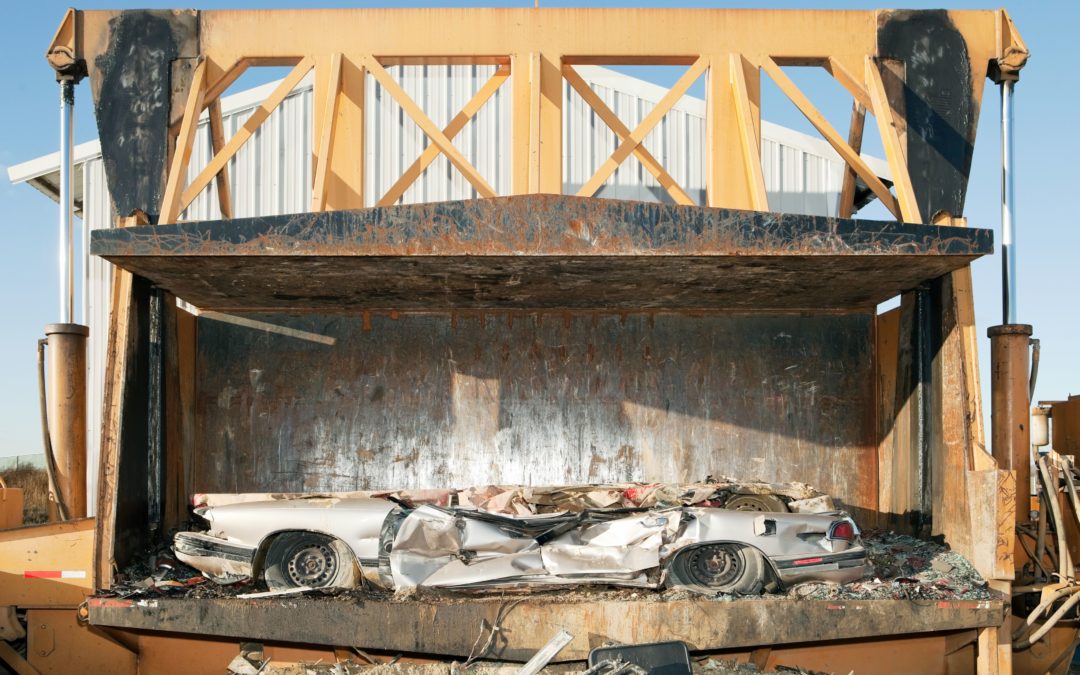What’s So Bad About Wasting 10%?
When it comes to fresh produce waste, the industry has a problem. Let me provide an analogy.
Consider the Auto Industry
Have you ever taken a tour of an automobile manufacturing facility? I toured what was then a General Motors factory when I was a youth. (That factory now makes Teslas.) It was fascinating to watch the parts arrive from the floor and ceiling, coming together at just the right time to produce a car. A lot of time, effort, expertise and money goes into making a car on an assembly line and, over the years, new technologies have been applied to improve quality, reduce defects and improve manufacturing efficiency.
Imagine, however, if you were on tour at an auto plant and you’re watching the cars come off the assembly line. You see nine cars being loaded onto transporters for sale, but the tenth car is immediately placed into a crusher and smashed like a soda can and hauled off to the dump.
Absurd, right?
No car manufacturer would stay in business if they wasted ten percent of their production. In fact, no industry could or should allow 10 percent of their product to be wasted yet that’s essentially what happens in the fresh food industry.
Fresh Produce Waste: A Big Problem for the Industry
According to the National Resource Defense Council’s Wasted report, 10 percent of fresh vegetables and 12 percent of fresh fruit are wasted at retail every year. It makes you want to scratch your head or get angry when you realize that, according to Feeding America, 40 million Americans, including more than 12 million children, are food insecure or that 18 percent of US methane (greenhouse) gas emissions are a result of fresh food waste.
This waste problem has been going on for decades. Why do we tolerate such massive amounts of fresh produce waste?
There are three aspects to the answer:
- There’s been no financial motivation to change the way we do things. The grocery industry has been fairly stable for years with little change in the competitive landscape or consumer buying habits. It’s almost an “if it ain’t broke, don’t fix it” view of the problem. That is, many believe there isn’t a problem. Or, if they do see this as a problem…
- The industry believes that there’s no way of solving the problem. Produce, after all, is a living thing. Even after its harvested, it continues to respirate and age. As such, many believe that fresh food waste is simply a “cost of doing business” that can’t be prevented.
- The fresh food industry has been a laggard in terms of utilizing technology. Various components of the fresh food supply chain still rely on outdated technology (such as trailer-level temperature data loggers) to identify potential issues. These low-tech tools do identify issues but do nothing to prevent fresh food waste problems from happening. They only document a problem after it has occurred.
Waste Fresh Produce No More
The industry is changing and rapidly realizing that fresh food waste is a cost they can no longer afford to turn a blind eye to.
Competitive pressures from new discount competitors like Amazon, Aldi and Lidl, and changing buying preferences including online shopping (yes, even for fruits and vegetables) and click-and-collect are causing retailers to look for ways to reduce costs so they can invest in growing their business.
This is causing retailers to take another look at ways to reduce fresh food waste as losing 10 to 12 percent of your potential sales on high revenue produce is a road to disaster. Maybe, just maybe, fresh produce waste is no longer a “cost of doing business” to be tolerated and there’s an increasing focus on addressing the costs of fresh food waste.
We’re now seeing retailers (and suppliers) look to new technologies for a solution to solve the food waste problem. In this year alone, we’ve seen significant investment in post-harvest fresh food management solutions that look to reduce fresh food waste.
Different Technologies Offer Different Results
Some of the new technologies work to extend shelf-life. Extending shelf-life is a good thing, but coatings, for example, can’t be applied to all types of produce and they don’t tell you how much remaining shelf-life the produce has.
Imaging and pulping approaches might be able to tell you the current remaining shelf-life but they’re only “snapshots” and, because they cannot measure the rate of change, they can’t predict the remaining shelf-life or truly enable intelligent decision making across the fresh food supply chain.
We believe Zest Fresh for Produce offers the most effective approach to reducing fresh produce waste. Zest Fresh begins by determining the maximum freshness capacity for each type of produce. Then we monitor the impact of time and temperature – the two most important factors that impact remaining shelf-life – of each pallet of produce beginning at harvest and provide a dynamic shelf-life indicator, the Zest Intelligent Pallet Routing Code (ZIPR Code) that enables supply chain managers to know – in real-time – the actual remaining freshness of each pallet of produce so that each pallet is delivered to the retailers with sufficient freshness to meet their requirements. This ensures that no produce spoils on the shelf or with the consumer.
The result is that Zest Fresh reduces fresh food waste by 50 percent or more. Reduced fresh produce waste means more money in the retailers’ pockets and the freshest produce for their customers.


